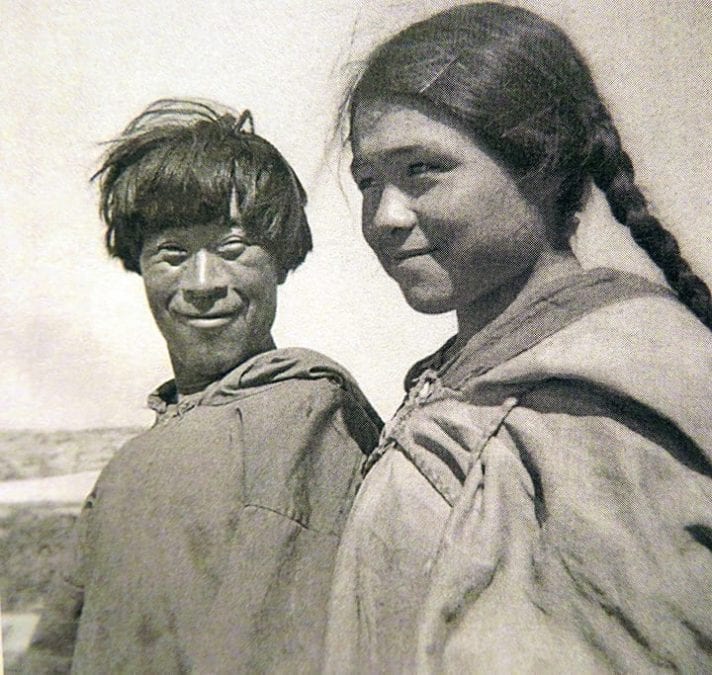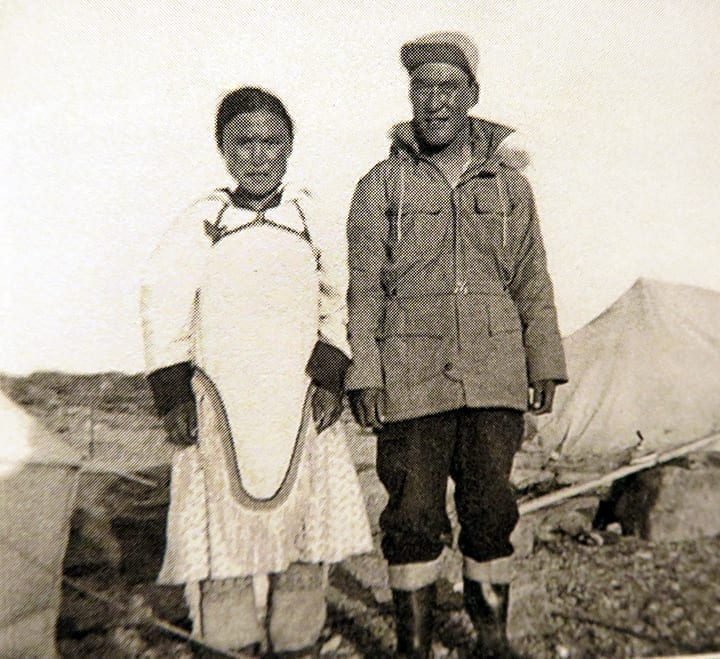The move to Rankin Inlet from Naujaat to work in the nickel mine was an historic change in life for the families involved in the mid-1950s SA����Ӱ�Ӵ�ý� and Piita Irniq, originally from Naujaat, remembers it well.
Irniq said he remembers when the federal government started flying Inuit couples on single-engine airplanes in 1956, as well as those who left Naujaat by dog team to go to Rankin.

He said in 1956, those who lived in Naujaat were still very, very traditional people.
SA����Ӱ�Ӵ�ý�There were no houses then and everyone who lived there had nothing except for the animals, sea mammals, Arctic char and things like that,SA����Ӱ�Ӵ�ý� said Irniq.
SA����Ӱ�Ӵ�ý�We were still travelling by dog team in the winter and walking the land to hunt caribou in the summer.
SA����Ӱ�Ӵ�ý�There were only five houses in the community; three belonged to the Hudson Bay Co. and two belonged to the Roman Catholic Church.
SA����Ӱ�Ӵ�ý�There were fewer than 100 Inuit in Naujaat in 1956 and most lived in an iglu in the winter, a tent in the summer, and travelled by dog team hunting and trapping whenever the weather was nice.SA����Ӱ�Ӵ�ý�
Irniq said it was through the Roman Catholic Church that Inuit in Naujaat learned of the nickel mine opening in Rankin Inlet and the company was actively recruiting Inuit to move to Rankin.
He still remembers many of those who decided to move to the new community.
SA����Ӱ�Ӵ�ý�Kailitaaq Maniilaq (Manilak) and his wife, Veronica, went as well as his older brother, Edward Iyakak, and his wife, Qaaq. A single-engine aircraft went to get them and flew them to Rankin to work in the mine,SA����Ӱ�Ӵ�ý� said Irniq.

SA����Ӱ�Ӵ�ý�Others who moved to Rankin at that time included Jack Anawak's family, Lorne Kusugak's family, and the late Bernadette Saumik, who became quite a good artist.
SA����Ӱ�Ӵ�ý�They were full-time hunters, trappers and fishers who started to work at the mine as soon as they arrived in Rankin SA����Ӱ�Ӵ�ý� and they stayed.SA����Ӱ�Ӵ�ý�
Irniq said their new community was much more modernized than Naujaat.
He said there was only a tiny Hudson Bay Co. store in Naujaat, that looked like a small confectionery store in southern Canada, and Rankin had so many new things to offer, such as a group of small matchbox houses that have since long faded away with time.
SA����Ӱ�Ӵ�ý�There were a lot of non-indigenous people from southern Canada in Rankin when they arrived, and everything was much bigger and more advanced in terms of housing development and things like that than Naujaat SA����Ӱ�Ӵ�ý� with even a few snowmobiles being already in the community.
SA����Ӱ�Ӵ�ý�When I say Inuit are very adaptable people, imagine being a full-time hunter one day and working in a mine the next. That still impresses me a lot.SA����Ӱ�Ӵ�ý�
When the new miners and their families arrived in Rankin, for the vast majority it was their first real exposure to the monetary system and things like credit.
Irniq said no one really had actual money in 1956 Naujaat, with, maybe, $50 to be found in the entire community with the little bit the Hudson Bay Co. and the Roman Catholic Church possessed.
He said trade was money in Naujaat at that time, so handling money was something they first became used to in Rankin.
SA����Ӱ�Ӵ�ý�They also started having square dances quite often when they moved to Rankin Inlet, getting all dressed up in southern clothes,SA����Ӱ�Ӵ�ý� said Irniq.
SA����Ӱ�Ӵ�ý�So, they had major changes in their lifestyle from an iglu to a working mine basically overnight, and they were introduced to all sorts of things southern Canadians had such as washing machines, toilets SA����Ӱ�Ӵ�ý� or maybe honey buckets SA����Ӱ�Ӵ�ý� inside the house.
SA����Ӱ�Ӵ�ý�The whole land was our washroom in Naujaat. All the waste was eaten by either our Inuit Husky dogs or the ravens, because that was the traditional way we lived.SA����Ӱ�Ӵ�ý�
Irniq said when the mine closed in 1962, many Inuit who had moved to Rankin Inlet from communities across the region decided to stay. Rankin had become their home and had many more facilities and amenities, a larger nursing station and a community hall. And, it offered their children better opportunities through schooling.
He said Rankin quickly became the hub of the Keewatin region for business opportunities from southern Canada.
SA����Ӱ�Ӵ�ý�When the mine closed, the Government of Canada opened a ceramic shop, which operated for almost 10 years, and a canning facility for maktaaq, seal meat and things like that in order to provide income for Inuit who had lost their jobs.
SA����Ӱ�Ӵ�ý�There were also some families who went to Yellowknife to work at the Giant Mine, such as Edward Iyakak, Francis Kapuk (still living in Rankin) and his older brother, Lucien Taparti.
SA����Ӱ�Ӵ�ý�They became very good company for me too, because I'd see them once in a while in Yellowknife when I was going to Sir John Franklin High School.
SA����Ӱ�Ӵ�ý�Still other Inuit moved to Lynn Lake to work at the mine there. They had learned to become good miners in Rankin Inlet and many of them went on to work at other places SA����Ӱ�Ӵ�ý� from that point of view, they were also adapting to life in much larger communities than Rankin Inlet.SA����Ӱ�Ӵ�ý�


